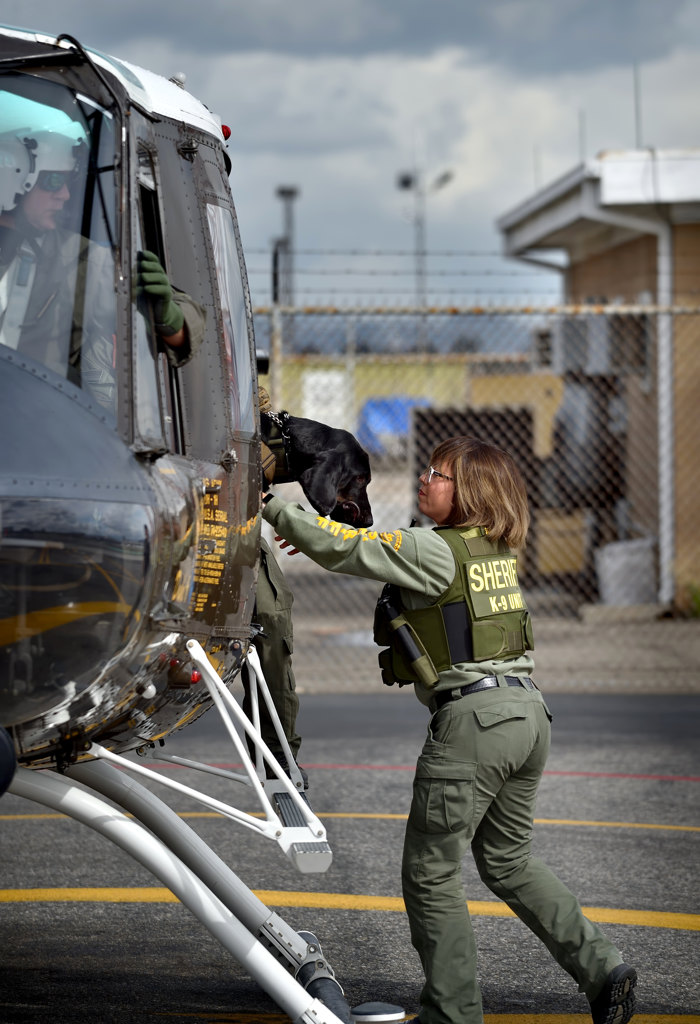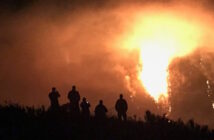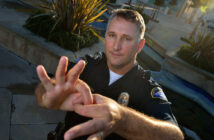Local law enforcement bloodhounds went airborne Feb. 15 during the National Police Bloodhound Association’s four-day trailing certification.
The 15 bloodhounds – and one trailing Labrador – gathered from agencies all over Southern California, including the OCSD, Santa Ana Police Department, Los Angeles Police Department, Riverside County Sheriff’s Department, San Bernardino County Sheriff’s Department, and Murrieta Police Department.

OCSD Reserve Deputy Josh Assayag talks to the other bloodhound handlers about an exercise to get their dogs used to a helicopter at the OCSD heliport at John Wayne Airport.
Photo by Steven Georges/Behind the Badge
Hosted at the OCSD air station, the NPBA training and certification on Feb. 15 included hands-on lessons on safely boarding and exiting the OCSD’s Duke 6 helicopter, as well as taking a quick flight to Huntington Beach and back.
OCSD Reserve Deputy Josh Assayag, who helped coordinate the certification, held in Southern California for the first time, said the importance of training like this is exposure for the dogs – and handlers – to situations they may encounter in the field.
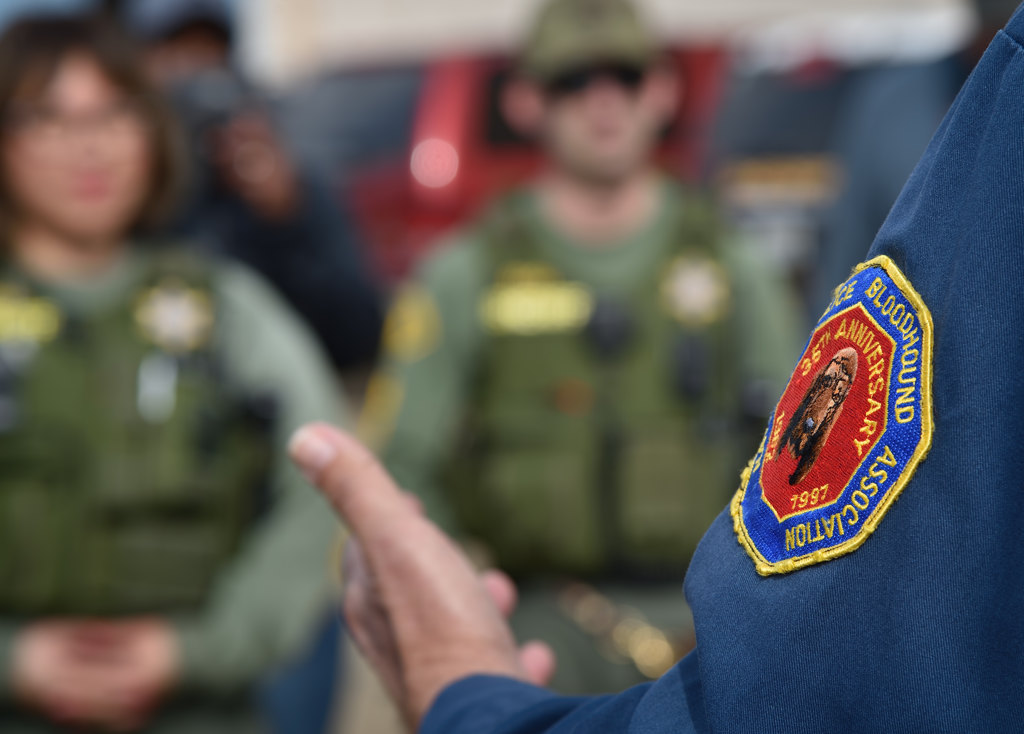
Dennis Guzlas, an instructor for the National Police Bloodhound Association, talks to law enforcement bloodhound handlers during a training session.
Photo by Steven Georges/Behind the Badge
“When we have to do it for real, it’s not the first time doing it,” he said. “The dogs have had this experience before and they don’t get freaked out by going on a helicopter.”
The dogs started out the lesson by going on a “cold load” on Duke 6, which allowed them to get acquainted with the helicopter and the OCSD air support team while the helicopter was turned off. They each entered through one side of the helicopter and exited through the other in preparation for the “hot load,” which involved turning on the helicopter for a quick flight.
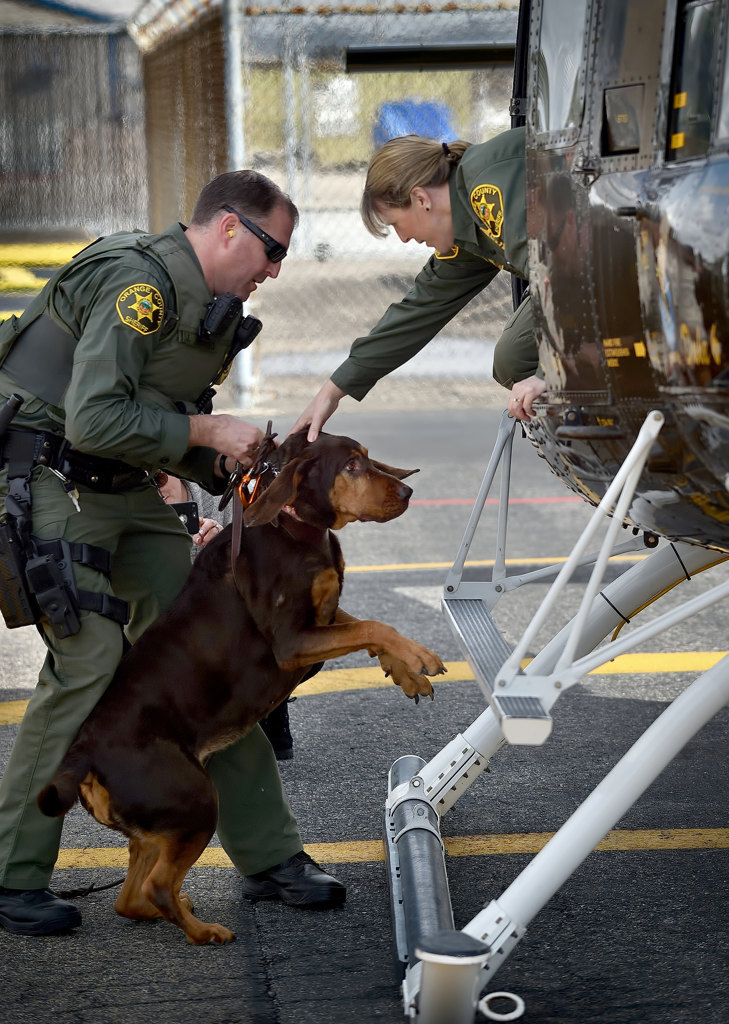
OCSD Reserve Deputy Josh Assayag helps Reserve Sgt. Brenda Ortiz coax her bloodhound, Reese, into a search and rescue helicopter.
Photo by Steven Georges/Behind the Badge
The dogs all showed varying levels of apprehension as they approached the helicopter, with its rotor blades roaring.
Reserve Deputy Brenda Ortiz, who helps coordinate the OCSD’s three bloodhounds, said it’s not just the noise that bothers the dogs.
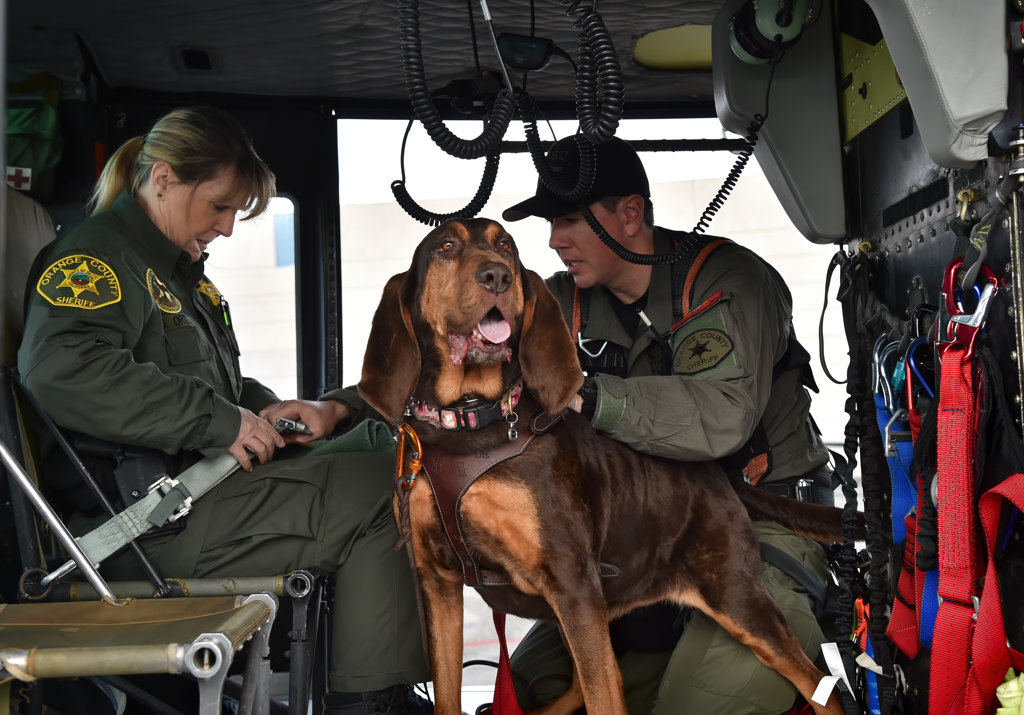
Reserve Sgt. Brenda Ortiz takes her bloodhound, Reese, up in OCSD’s Duke 6 rescue helicopter.
Photo by Steven Georges/Behind the Badge
“They don’t like the vibration,” she said.
Despite that, her dog, Reese, who is 8 1/2 and had participated in helicopter training once before, did pretty well, according to Ortiz. Once inside for the short helicopter ride, it was like a car ride, she said.
Some dogs needed a little more support getting in.
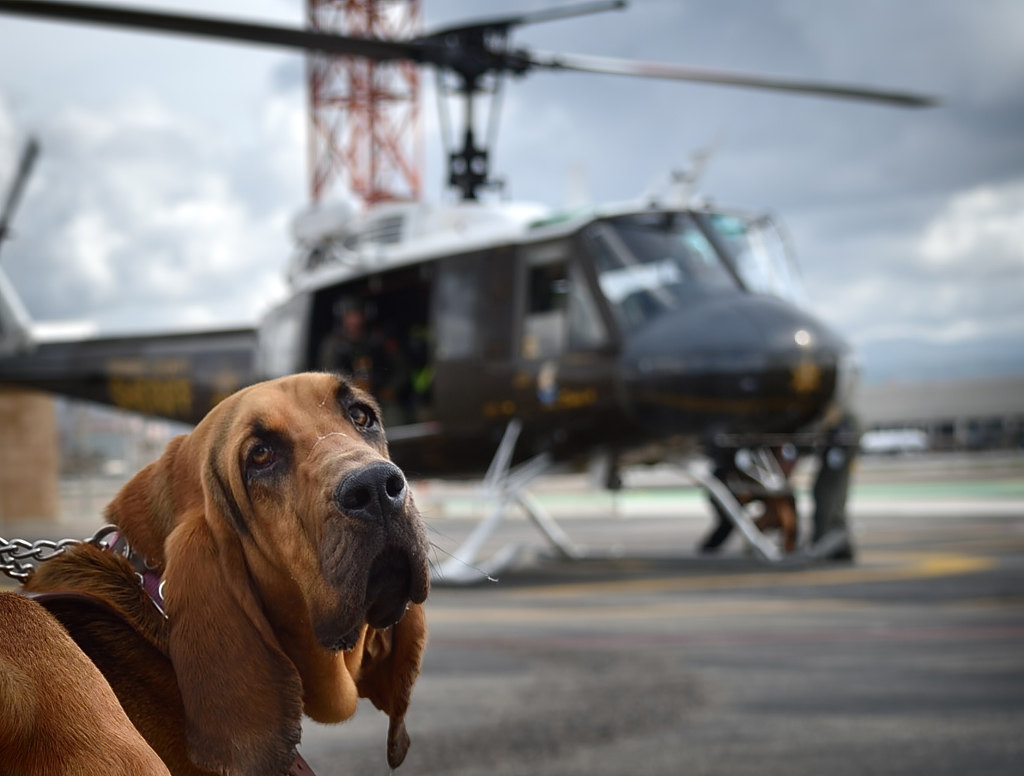
Remi, a bloodhound K9 with the OCSD, looks back as his handler, Reserve Deputy Josh Assayag, tries to move him closer to Duke 6 as the blades spin.
Photo by Steven Georges/Behind the Badge
Assayag’s dog, Remi, who is 1 1/2, didn’t want to go in the helicopter the first time during the hot load, but a second try – with Assayag carrying her in – was successful. He said once in the helicopter, she relaxed and even looked out the window.
“She leaned up against me,” he said.
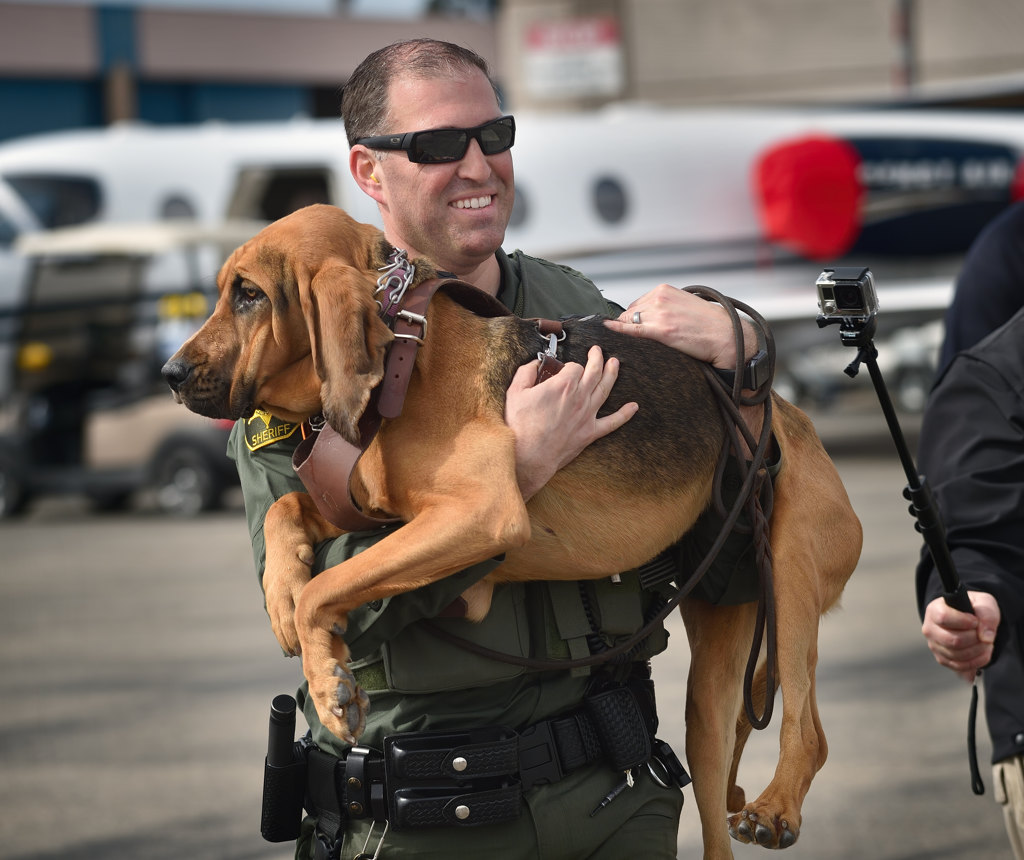
OCSD Reserve Deputy Josh Assayag takes his reluctant bloodhound, Remi, to the noisy helicopter as part of his training.
Photo by Steven Georges/Behind the Badge
He said following an instructor’s directions to scoop her up before getting in the helicopter helped her feel safer. Apprehension is quite normal – which is why the training is so important.
“That’s a normal reaction to a new environment,” he said. “Some dogs get frightened by some things and not by other things.”
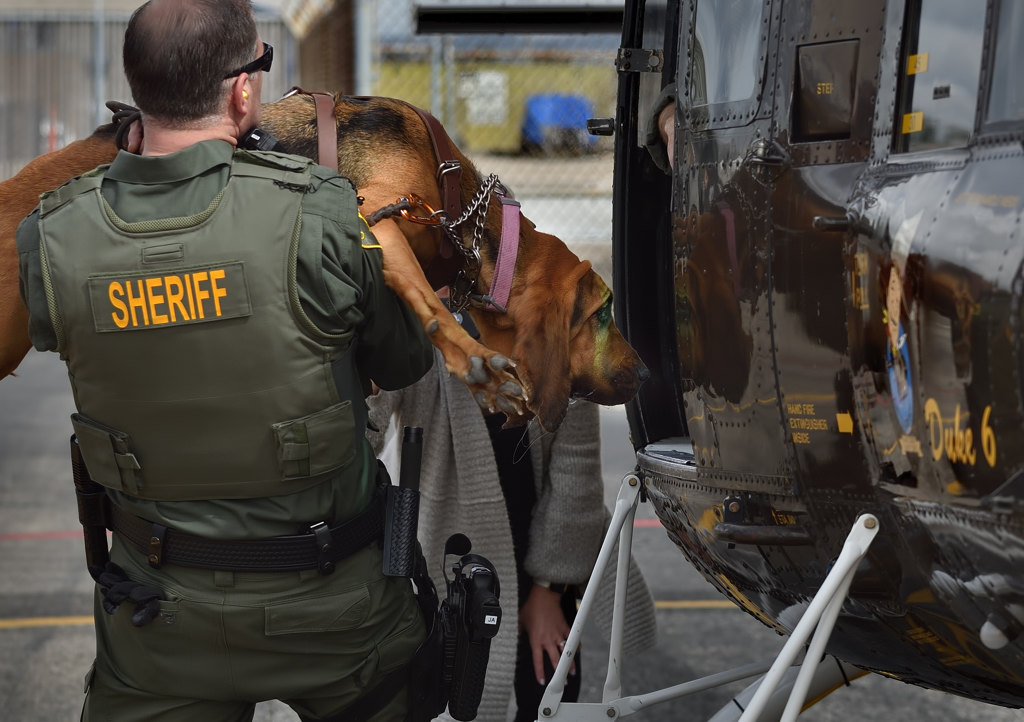
OCSD Reserve Deputy Josh Assayag caries his bloodhound, Remi, onto Duke 6, a Huey helicopter used for rescues, during a training exercise.
Photo by Steven Georges/Behind the Badge
The bloodhounds are used to search for people – missing persons as well as criminals.
Sometimes searches are done in remote areas like in wilderness canyons. Helicopters may be necessary to deploy the bloodhounds in those areas. The rest of the four-day training involved other scenarios the bloodhounds and their handlers might encounter, including working alongside patrol K9s and SWAT.

Bloodhound and Labrador handlers from Orange County, Los Angeles County, Riverside County and San Bernardino County gather in front of OCSD’s Duke 6, a Huey Helicopter used for search and rescue, after a training session.
Photo by Steven Georges/Behind the Badge
Following the hot loading, each of the dogs got to go for a quick run – a “runaway” – with one of two volunteer children running and calling out to each dog to motivate each to give chase.
“It helps keep what’s called their ‘prey drive’ up,” Assayag said.
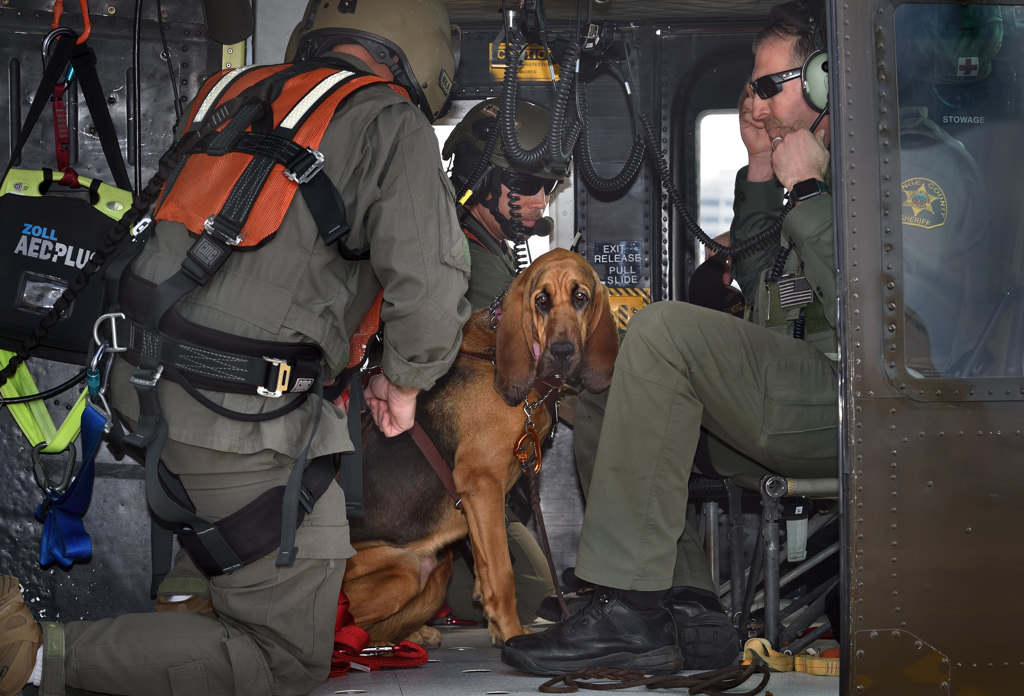
OCSD Reserve Deputy Josh Assayag stays close to his K9 partner, Remi, as they are taken up in a rescue helicopter during training.
Photo by Steven Georges/Behind the Badge
Ultimately, the experience has to be fun for the working dogs, so there’s plenty of praise – and treats – to go around.
“If it’s not fun for the animal, why would they do this for us?” said Cpl. Dennis Guzlas, an instructor with the NPBA. “The food is Mother Nature’s added little incentive for that dog to go in.”
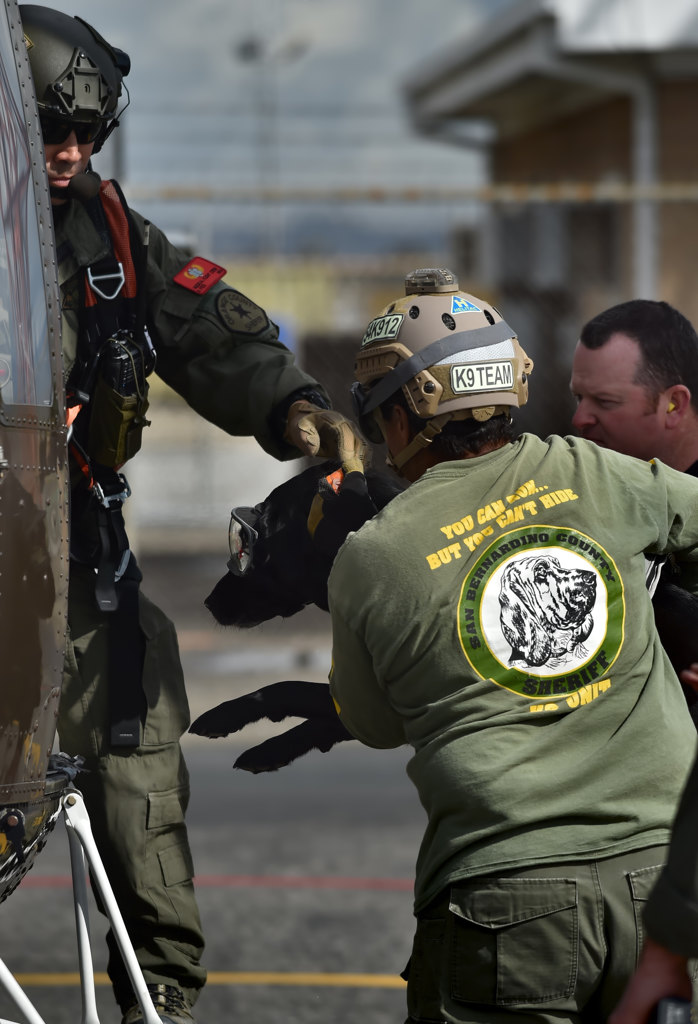
Margo Machen helps Dillon, a black lab from the San Bernardino Sheriff’s Department, into the OCSD’s Huey helicopter used for search and rescues as part of his training.
Photo by Steven Georges/Behind the Badge
After the practical training, the group took a lunch break for pizza and a debrief. During the debrief, Coby Webb, who is also an instructor with the NPBA and helped coordinate the training, talked about a scent kit she developed as a tool to assist in missing persons’ cases.
Having worked on the Samantha Runnion kidnapping case with her bloodhound and other cases, she knows the importance of having a clean scent item for bloodhounds. These are items that have only the scent of the missing person on them, but they are hard to find in a home.
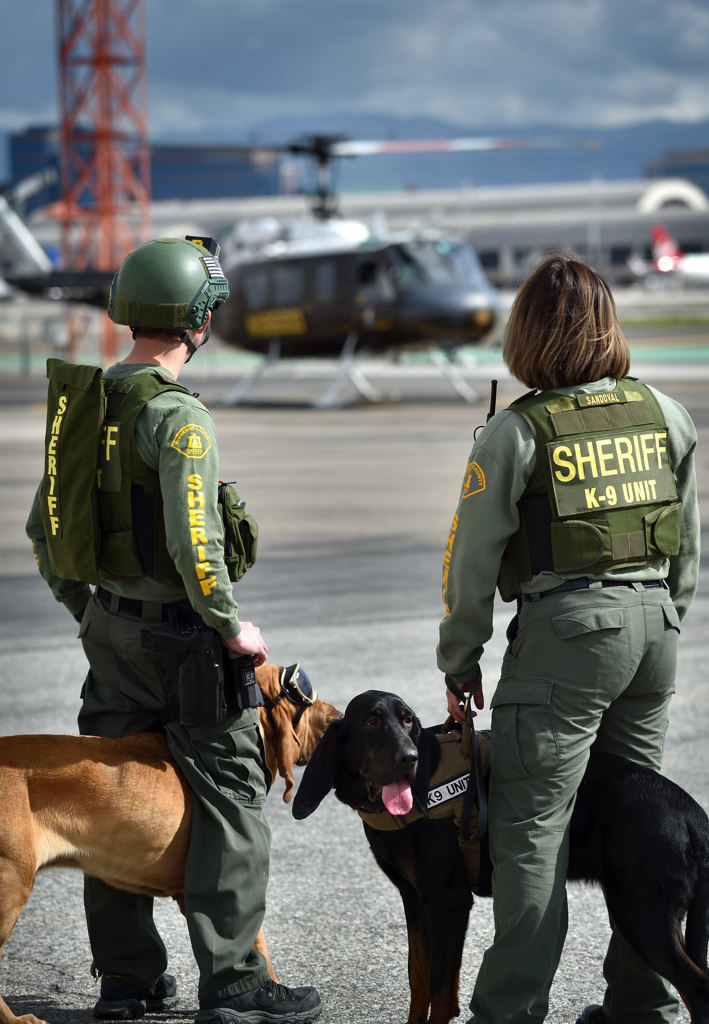
Robert Ochoa and Janine Sandoval of the Riverside County Sheriff’s Department get ready to take their K9s, Windy, left, and Raven, up in a Huey rescue helicopter for their training at John Wayne Airport.
Photo by Steven Georges/Behind the Badge
This kit gives people the tools to save clean scent items for children – and others at risk of going missing such as those with dementia – so that bloodhounds have a direct scent to search.
“We all know that scent items are super important to our dogs,” Webb said at the debrief. “I wanted something where we put it in the dog’s favor.”

Windy, a bloodhound with the Riverside County Sheriff’s Department, wears protective googles as she gets ready for her ride in a helicopter.
Photo by Steven Georges/Behind the Badge
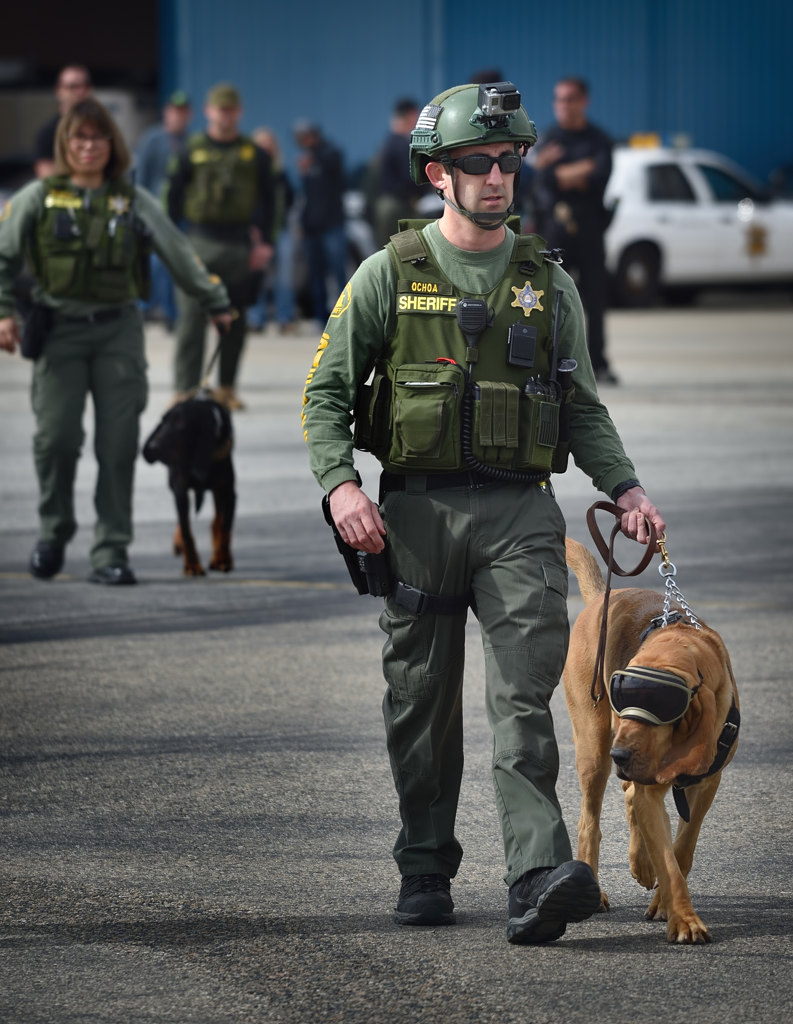
Robert Ochoa of the Riverside County Sheriff’s Department walks his K9, Windy, up to the noisy helicopter during training.
Photo by Steven Georges/Behind the Badge
 Behind the Badge
Behind the Badge

